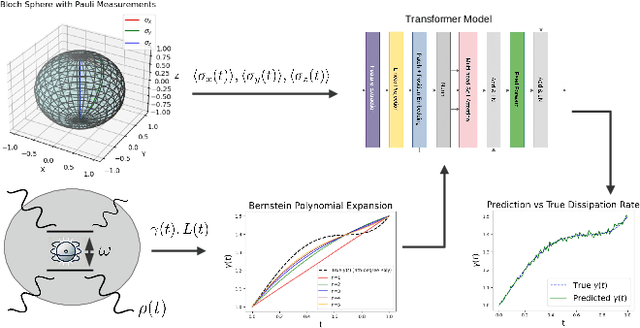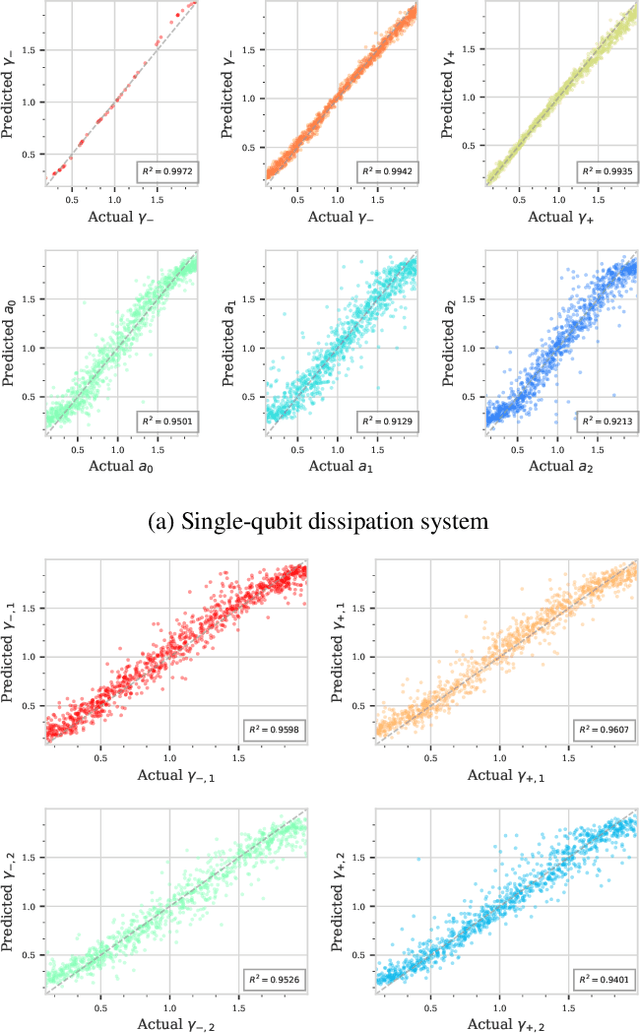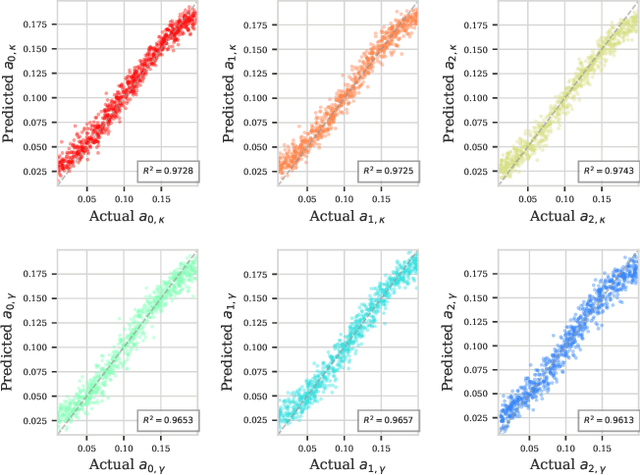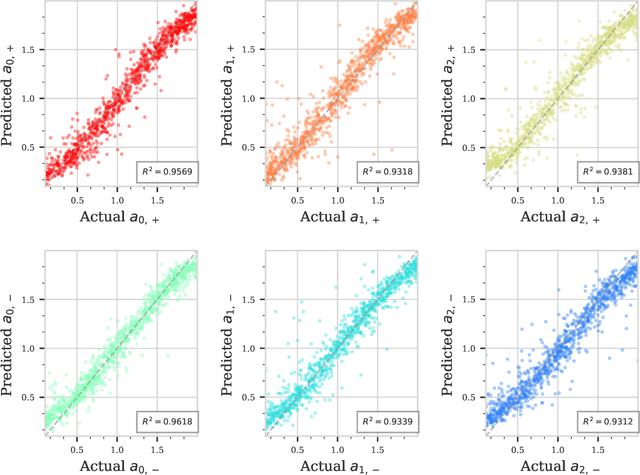En-Jui Kuo
Quantum Reinforcement Learning-Guided Diffusion Model for Image Synthesis via Hybrid Quantum-Classical Generative Model Architectures
Sep 17, 2025Abstract:Diffusion models typically employ static or heuristic classifier-free guidance (CFG) schedules, which often fail to adapt across timesteps and noise conditions. In this work, we introduce a quantum reinforcement learning (QRL) controller that dynamically adjusts CFG at each denoising step. The controller adopts a hybrid quantum--classical actor--critic architecture: a shallow variational quantum circuit (VQC) with ring entanglement generates policy features, which are mapped by a compact multilayer perceptron (MLP) into Gaussian actions over $\Delta$CFG, while a classical critic estimates value functions. The policy is optimized using Proximal Policy Optimization (PPO) with Generalized Advantage Estimation (GAE), guided by a reward that balances classification confidence, perceptual improvement, and action regularization. Experiments on CIFAR-10 demonstrate that our QRL policy improves perceptual quality (LPIPS, PSNR, SSIM) while reducing parameter count compared to classical RL actors and fixed schedules. Ablation studies on qubit number and circuit depth reveal trade-offs between accuracy and efficiency, and extended evaluations confirm robust generation under long diffusion schedules.
Unraveling Quantum Environments: Transformer-Assisted Learning in Lindblad Dynamics
May 11, 2025



Abstract:Understanding dissipation in open quantum systems is crucial for the development of robust quantum technologies. In this work, we introduce a Transformer-based machine learning framework to infer time-dependent dissipation rates in quantum systems governed by the Lindblad master equation. Our approach uses time series of observable quantities, such as expectation values of single Pauli operators, as input to learn dissipation profiles without requiring knowledge of the initial quantum state or even the system Hamiltonian. We demonstrate the effectiveness of our approach on a hierarchy of open quantum models of increasing complexity, including single-qubit systems with time-independent or time-dependent jump rates, two-qubit interacting systems (e.g., Heisenberg and transverse Ising models), and the Jaynes--Cummings model involving light--matter interaction and cavity loss with time-dependent decay rates. Our method accurately reconstructs both fixed and time-dependent decay rates from observable time series. To support this, we prove that under reasonable assumptions, the jump rates in all these models are uniquely determined by a finite set of observables, such as qubit and photon measurements. In practice, we combine Transformer-based architectures with lightweight feature extraction techniques to efficiently learn these dynamics. Our results suggest that modern machine learning tools can serve as scalable and data-driven alternatives for identifying unknown environments in open quantum systems.
Quantum Adaptive Self-Attention for Quantum Transformer Models
Apr 05, 2025Abstract:Transformer models have revolutionized sequential learning across various domains, yet their self-attention mechanism incurs quadratic computational cost, posing limitations for real-time and resource-constrained tasks. To address this, we propose Quantum Adaptive Self-Attention (QASA), a novel hybrid architecture that enhances classical Transformer models with a quantum attention mechanism. QASA replaces dot-product attention with a parameterized quantum circuit (PQC) that adaptively captures inter-token relationships in the quantum Hilbert space. Additionally, a residual quantum projection module is introduced before the feedforward network to further refine temporal features. Our design retains classical efficiency in earlier layers while injecting quantum expressiveness in the final encoder block, ensuring compatibility with current NISQ hardware. Experiments on synthetic time-series tasks demonstrate that QASA achieves faster convergence and superior generalization compared to both standard Transformers and reduced classical variants. Preliminary complexity analysis suggests potential quantum advantages in gradient computation, opening new avenues for efficient quantum deep learning models.
Computational Limits of Low-Rank Adaptation (LoRA) for Transformer-Based Models
Jun 05, 2024Abstract:We study the computational limits of Low-Rank Adaptation (LoRA) update for finetuning transformer-based models using fine-grained complexity theory. Our key observation is that the existence of low-rank decompositions within the gradient computation of LoRA adaptation leads to possible algorithmic speedup. This allows us to (i) identify a phase transition behavior and (ii) prove the existence of nearly linear algorithms by controlling the LoRA update computation term by term, assuming the Strong Exponential Time Hypothesis (SETH). For the former, we identify a sharp transition in the efficiency of all possible rank-$r$ LoRA update algorithms for transformers, based on specific norms resulting from the multiplications of the input sequence $\mathbf{X}$, pretrained weights $\mathbf{W^\star}$, and adapter matrices $\alpha \mathbf{B} \mathbf{A} / r$. Specifically, we derive a shared upper bound threshold for such norms and show that efficient (sub-quadratic) approximation algorithms of LoRA exist only below this threshold. For the latter, we prove the existence of nearly linear approximation algorithms for LoRA adaptation by utilizing the hierarchical low-rank structures of LoRA gradients and approximating the gradients with a series of chained low-rank approximations. To showcase our theory, we consider two practical scenarios: partial (e.g., only $\mathbf{W}_V$ and $\mathbf{W}_Q$) and full adaptations (e.g., $\mathbf{W}_Q$, $\mathbf{W}_V$, and $\mathbf{W}_K$) of weights in attention heads.
CoRMF: Criticality-Ordered Recurrent Mean Field Ising Solver
Mar 07, 2024


Abstract:We propose an RNN-based efficient Ising model solver, the Criticality-ordered Recurrent Mean Field (CoRMF), for forward Ising problems. In its core, a criticality-ordered spin sequence of an $N$-spin Ising model is introduced by sorting mission-critical edges with greedy algorithm, such that an autoregressive mean-field factorization can be utilized and optimized with Recurrent Neural Networks (RNNs). Our method has two notable characteristics: (i) by leveraging the approximated tree structure of the underlying Ising graph, the newly-obtained criticality order enables the unification between variational mean-field and RNN, allowing the generally intractable Ising model to be efficiently probed with probabilistic inference; (ii) it is well-modulized, model-independent while at the same time expressive enough, and hence fully applicable to any forward Ising inference problems with minimal effort. Computationally, by using a variance-reduced Monte Carlo gradient estimator, CoRFM solves the Ising problems in a self-train fashion without data/evidence, and the inference tasks can be executed by directly sampling from RNN. Theoretically, we establish a provably tighter error bound than naive mean-field by using the matrix cut decomposition machineries. Numerically, we demonstrate the utility of this framework on a series of Ising datasets.
Quantum Architecture Search via Deep Reinforcement Learning
Apr 15, 2021



Abstract:Recent advances in quantum computing have drawn considerable attention to building realistic application for and using quantum computers. However, designing a suitable quantum circuit architecture requires expert knowledge. For example, it is non-trivial to design a quantum gate sequence for generating a particular quantum state with as fewer gates as possible. We propose a quantum architecture search framework with the power of deep reinforcement learning (DRL) to address this challenge. In the proposed framework, the DRL agent can only access the Pauli-$X$, $Y$, $Z$ expectation values and a predefined set of quantum operations for learning the target quantum state, and is optimized by the advantage actor-critic (A2C) and proximal policy optimization (PPO) algorithms. We demonstrate a successful generation of quantum gate sequences for multi-qubit GHZ states without encoding any knowledge of quantum physics in the agent. The design of our framework is rather general and can be employed with other DRL architectures or optimization methods to study gate synthesis and compilation for many quantum states.
 Add to Chrome
Add to Chrome Add to Firefox
Add to Firefox Add to Edge
Add to Edge